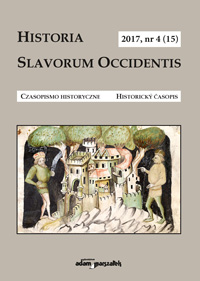Zwyczaje pogrzebowe i usługi pogrzebowe polskiego Lwowa na przełomie XIX i XX w
Burial rituals and funerary services in the Polish community in Lvov in the late 19th and the early 20th centuries
Author(s): Ryszard TomczykContributor(s): Ewa Dratwa (Translator)
Subject(s): History, Cultural history, Modern Age, Recent History (1900 till today), Theology and Religion, 19th Century
Published by: Wydawnictwo Adam Marszałek
Keywords: Galicia;Lvov;cemeteries;burial rituals;funerary services
Summary/Abstract: In the late 19th century, the larger cities in Galicia including the capital city of Lvov followed the example of large centres in the Habsburg empire where private, licensed funeral parlours were established, rendering comprehensive funerary services. In the first decade of the 19th century, the Lvov authorities decided to affect the prices of funerary services. One of the reasons was intention to offer standard funerary services to the city’s poor inhabitants. The magistrate’s goal was to have its own communal funeral parlour which would also handle funerals of the city’s less affluent inhabitants. In 1909, the “Concordia” Municipal Funeral Parlour started operations. In the Polish community in Lvov, the burial ritual was directly related to the Catholic tradition. In the last two decades of the 19th century, an obituary published in the press made its way to the burial ritual in Lvov in the form still used today i.e. information about the death and the date of the funeral, sometimes also about a memorial service, graphically marked with a thick black border with a cross. The funerary ritual which emerged at that time remained largely unchanged in the Second Polish Republic (1918– 1939). The situation changed after WWII when Lvov was under the Soviet and Ukrainian rule. While in this difficult time the Catholic church was persecuted, Poles living in Lvov made an effort to invite a priest to funerals of their next of kin.
Journal: Historia Slavorum Occidentis
- Issue Year: 2017
- Issue No: 4
- Page Range: 71-87
- Page Count: 17
- Language: Polish

